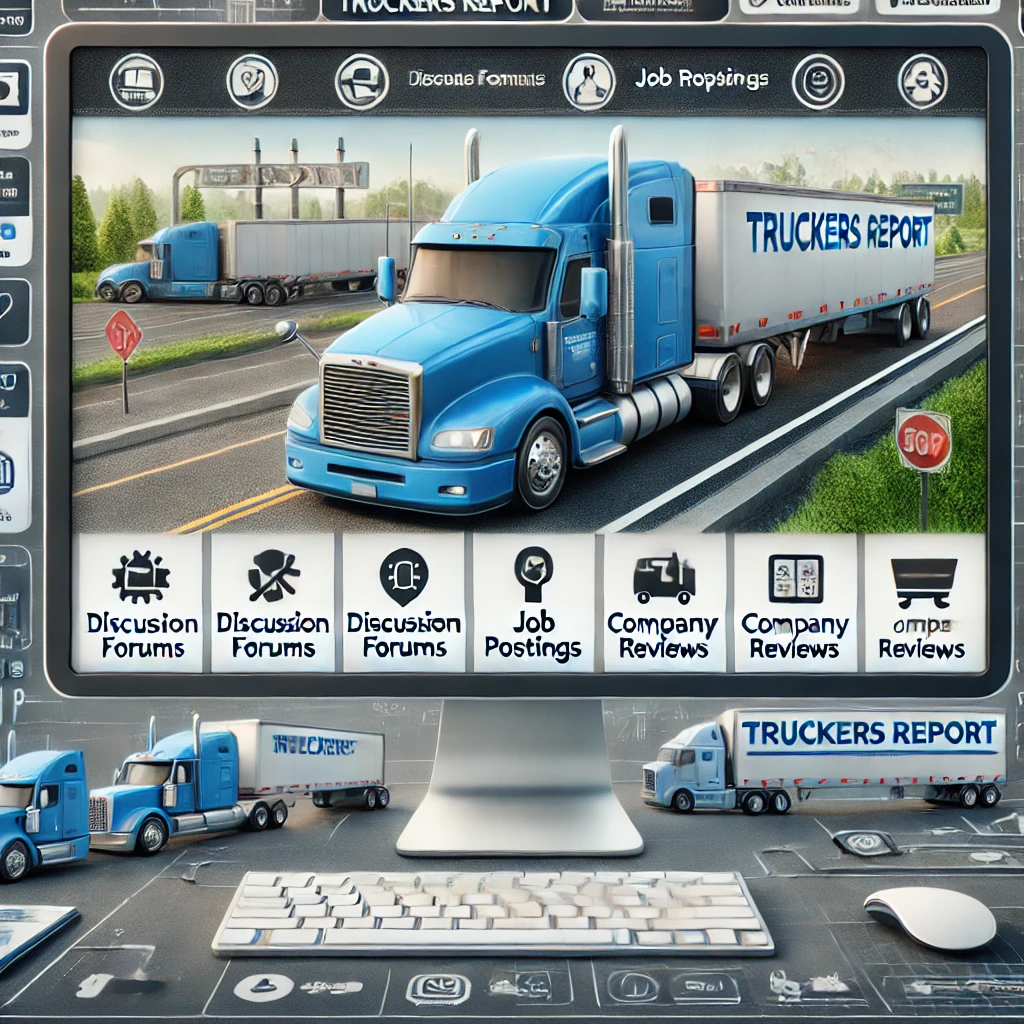Active Trucks: Keeping Your Fleet in Top Condition

Understanding the Importance of Active Trucks
An active truck fleet is the backbone of any successful trucking operation. It directly impacts:
- Operational Efficiency: Minimizes downtime and keeps deliveries on schedule.
- Cost Management: Reduces unexpected repair costs and fuel inefficiencies.
- Safety: Well-maintained trucks are safer for drivers and other road users.
- Compliance: Meets regulatory requirements for vehicle condition and performance.
- Customer Satisfaction: Ensures timely and reliable deliveries.
Key Components of Fleet Maintenance
1. Preventive Maintenance Programs
Implementing a robust preventive maintenance program is crucial for keeping trucks active:
- Regular Inspections: Schedule routine checks for all vehicles.
- Maintenance Schedules: Follow manufacturer-recommended service intervals.
- Fluid Checks and Changes: Regular oil, coolant, and other fluid maintenance.
- Tire Management: Regular rotation, alignment, and replacement.
- Brake System Maintenance: Ensure brakes are always in top condition.
2. Driver Training and Involvement
Drivers play a critical role in maintaining active trucks:
- Pre-trip Inspections: Train drivers to conduct thorough pre-trip checks.
- Reporting Procedures: Establish clear processes for drivers to report issues.
- Safe Driving Practices: Educate drivers on driving techniques that reduce wear and tear.
- Basic Maintenance Skills: Teach drivers to handle minor maintenance tasks.
3. Utilizing Technology for Fleet Management
Leverage technology to enhance fleet maintenance:
- Telematics Systems: Monitor vehicle performance and identify issues early.
- Predictive Maintenance Software: Use data analytics to predict maintenance needs.
- Digital Inspection Tools: Implement apps for streamlined inspection processes.
- Inventory Management Systems: Ensure parts availability for timely repairs.
4. Establishing a Reliable Maintenance Network
Build a strong support system for your fleet:
- In-house Maintenance Facilities: For larger fleets, consider on-site maintenance capabilities.
- Trusted Service Partners: Develop relationships with reliable external service providers.
- Emergency Repair Protocols: Have plans in place for unexpected breakdowns.

Best Practices for Keeping Trucks Active
1. Implement a Tiered Maintenance Approach
- Daily Checks: Quick inspections performed by drivers.
- Weekly Inspections: More thorough checks of critical components.
- Monthly Reviews: Comprehensive inspections and preventive maintenance.
- Annual Overhauls: In-depth examinations and major component servicing.
2. Focus on Critical Systems
Pay special attention to systems that are crucial for keeping trucks active:
- Engine Health: Regular diagnostics and timely addressing of issues.
- Electrical Systems: Ensure batteries, alternators, and starters are in good condition.
- Cooling Systems: Maintain radiators and coolant levels to prevent overheating.
- Transmission: Regular checks and fluid changes to prevent major failures.
3. Tire Management Program
Tires significantly impact truck performance and safety:
- Regular Inspections: Check for wear, damage, and proper inflation.
- Rotation Schedule: Implement a consistent tire rotation schedule.
- Retreading: Consider tire retreading for cost-effective management.
- Alignment Checks: Perform regular wheel alignments to prevent uneven wear.
4. Fuel Efficiency Measures
Improving fuel efficiency keeps trucks active and reduces operational costs:
- Aerodynamic Enhancements: Install skirts, fairings, and other aerodynamic devices.
- Engine Tuning: Regular engine tuning for optimal performance.
- Speed Management: Implement policies to maintain fuel-efficient speeds.
- Idle Reduction: Use auxiliary power units to reduce unnecessary idling.
5. Data-Driven Decision Making
Utilize data to inform maintenance strategies:
- Performance Metrics: Track KPIs like miles per gallon, downtime, and repair frequency.
- Cost Analysis: Monitor maintenance costs to identify areas for improvement.
- Trend Analysis: Look for patterns in breakdowns or performance issues.
Innovative Approaches to Fleet Maintenance
1. Predictive Maintenance
Use advanced analytics to predict maintenance needs:
- Sensor Technology: Implement sensors to monitor component health in real-time.
- AI and Machine Learning: Utilize AI to analyze data and predict potential failures.
- Customized Maintenance Schedules: Tailor maintenance based on actual usage and conditions.
2. Mobile Maintenance Units
Bring maintenance to the trucks:
- Equipped Service Vehicles: Deploy mobile units for on-site repairs and maintenance.
- Scheduled Visits: Plan regular visits to truck locations for preventive maintenance.
- Emergency Response: Quick deployment for roadside assistance.
3. 3D Printing for Parts
Explore 3D printing technology for parts management:
- On-Demand Production: Print certain parts as needed to reduce inventory costs.
- Custom Solutions: Create custom parts for unique or obsolete components.
- Rapid Prototyping: Quickly test and implement new part designs.
4. Virtual Reality Training
Enhance maintenance training with VR technology:
- Simulated Repairs: Train technicians on complex repairs in a virtual environment.
- Safety Training: Simulate hazardous scenarios without real-world risks.
- Remote Assistance: Use VR for real-time guidance from experts during repairs.

Challenges in Maintaining Active Trucks
1. Aging Fleet Management
Strategies for managing older vehicles:
- Increased Inspection Frequency: More frequent checks for older trucks.
- Upgrade Plans: Develop strategies for timely fleet upgrades.
- Cost-Benefit Analysis: Regularly assess repair costs versus replacement.
2. Regulatory Compliance
Stay compliant with evolving regulations:
- Emission Standards: Keep up with changing emission requirements.
- Safety Regulations: Ensure compliance with safety standards like ELDs.
- Documentation: Maintain thorough records of maintenance and inspections.
3. Skilled Labor Shortage
Address the challenge of finding skilled technicians:
- Training Programs: Develop in-house training for technicians.
- Partnerships with Schools: Collaborate with vocational schools for recruitment.
- Retention Strategies: Implement programs to retain skilled maintenance staff.

Case Studies: Success in Fleet Activation
Case Study 1: Large Logistics Company
- Challenge: High downtime due to reactive maintenance approach.
- Solution: Implemented predictive maintenance using telematics and AI.
- Result: 30% reduction in unexpected breakdowns, 15% increase in fleet uptime.
Case Study 2: Regional Delivery Service
- Challenge: Inconsistent maintenance quality across different service locations.
- Solution: Standardized maintenance procedures and implemented mobile maintenance units.
- Result: 25% improvement in maintenance consistency, 20% reduction in repair costs.
:
Future Trends in Active Truck Maintenance
- Electrification: Preparing for maintenance of electric and hybrid trucks.
- Autonomous Vehicles: Adapting maintenance strategies for self-driving trucks.
- IoT Integration: Increased use of Internet of Things for real-time monitoring.
- Blockchain for Maintenance Records: Implementing blockchain for secure, transparent maintenance history.

Conclusion
Maintaining an active truck fleet is a multifaceted challenge that requires a combination of strategic planning, technological integration, and proactive management. By implementing comprehensive maintenance programs, leveraging cutting-edge technologies, and focusing on continuous improvement, fleet operators can ensure their trucks remain active, efficient, and ready to meet the demands of modern logistics.
The key to success lies in viewing fleet maintenance not as a cost center, but as a strategic investment that drives operational excellence, safety, and customer satisfaction. As the trucking industry continues to evolve, staying ahead in fleet maintenance will be crucial for companies looking to maintain a competitive edge.
For fleet managers and trucking companies looking to optimize their maintenance operations and keep their trucks active, integrating advanced fleet management software can be a game-changer. This is where solutions like those offered by Linbis come into play. Linbis specializes in developing custom logistics software that can help trucking companies streamline their maintenance processes, from scheduling and tracking to predictive analytics and reporting. By leveraging Linbis’s expertise in creating tailored software solutions, fleet managers can gain better visibility into their maintenance needs, automate routine tasks, and make data-driven decisions to keep their trucks active and their operations running smoothly. Whether you’re managing a small fleet or a large-scale operation, combining best practices in fleet maintenance with advanced software solutions can significantly enhance your ability to keep your trucks active and your business thriving in the competitive world of trucking.
